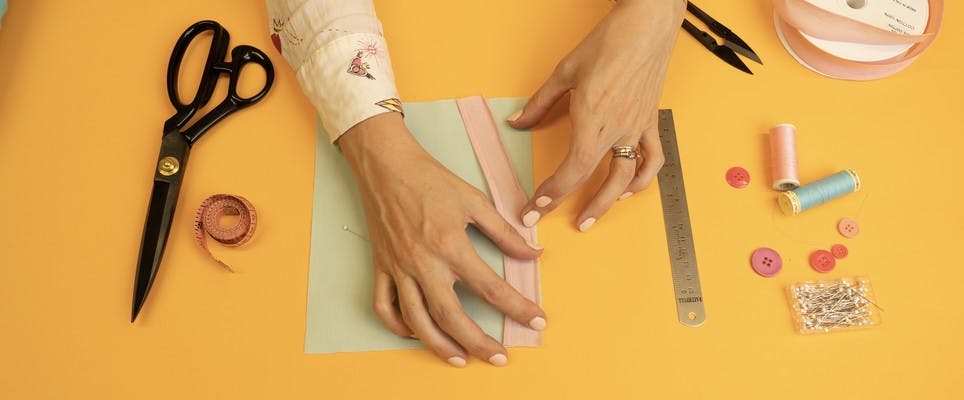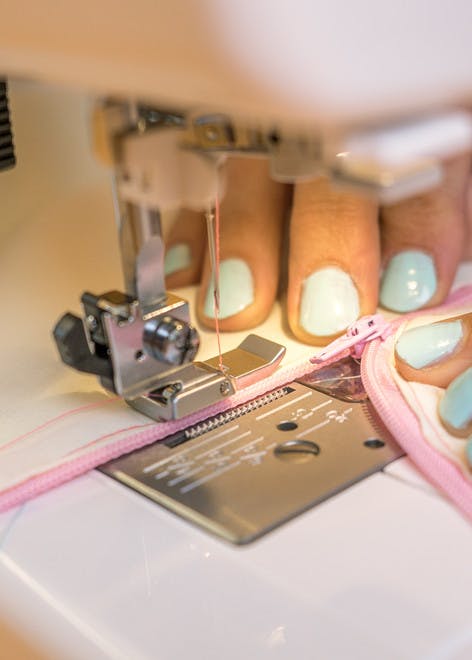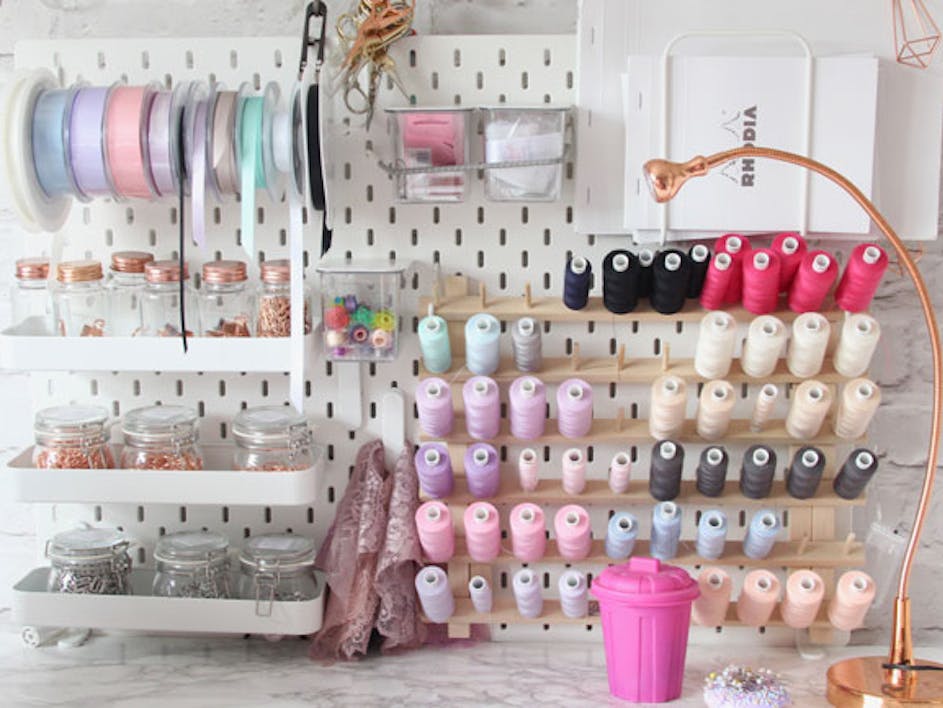Glossary of Sewing Terms
Published on 28 November 2018 By Emma 5 min read
Ever wondered what the difference is between a warp and a weft? Wouldn't know a satin from a slip stitch? This handy glossary of sewing terms is here to make things simpler and sort your top stitching from your tacking.
B
Basting Stitch - see tacking
Bias - the bias of a piece of woven fabric is usually at a 45 angle from the warp and weft (the vertical and horizontal threads that make up the fabric). The bias of a woven fabric is stretchier than the cross grains, and when something is cut on the bias, it has movement and drape.
Bias Tape or Binding - a tape or strip made from a piece of fabric cut on the bias, used to finish an edge or seam. Often used around neck holes or arm holes as it encloses the entire seam and leaves a neat finish.
Binding - this is when you finish an edge or a hem by attaching a trim or a tape.
Blind stitch - see invisible hem
C
Clipping - when you've sewn a curved seam, or something with a point, there will be lots of bulky fabric along the seam line that stops your finished line looking all nice and smooth. Clipping is a technique where you snip out little sections of material along the seam line to make it the right finished shape.
Crossgrain - see weft
D
Dart - little folds and tucks sewn into fabric to create shape and take up ease. Usually used around the bust or bum.
Double hem - hem where the raw edge is folded over, then over again before being stitched in place.
E
Ease - If you made something that perfectly fitted the body you wouldn't be able to move in it, ease is a way of manipulating fabric that allows it to have movement when on the body.
Ease stitch - is a technique that is a bit like gathering, where you have a once piece of fabric that is bigger than the other, but the finished piece has no ruffles or puckers.
F
Flat fell seam - also known as a felled seam, is made by one edge of a seam being folded and stitched underneath another. Usually used with sturdy fabrics like denim.
Foot - interchangeable metal plate on a sewing machine that holds fabric flat as it's stitched.
G
Gathering - a technique used to make a wider piece of fabric fit against a narrower piece of fabric, creating ruffles.
Grain - see warp
H
Hem - a technique used to encase the raw edge of fabric.
I
Invisible hem - a hand stitched hem that when finished, can't be seen on the right side of the fabric.
Invisible zip - a zip that when inserted has no visible stitching on the right side of the fabric.

N
Notches - cut out sections on a pattern that indicate where pattern pieces join together.
Notions - these are little haberdashery items that are sewn on to things like lace, buttons and ribbons.
P
Princess seam - a technique used to sew long, curved seams into the front or back of women's shirts that avoids using darts.
R
Right side - the 'front' of the fabric, sometimes called the 'face', is the side of the fabric that will be on the outside of a finished garment.
S
Satin stitch - this is the name for a very tight, close together, zigzag stitch, and creates a solid, blocky line.
Seam - the line where two pieces of fabric are joined together.
Seam allowance - usually around 1.5cm/ 5/8", this is the width from the edge of the fabric to the stitching line.
Seam or Stitch Ripper - small tool designed for cutting or unpicking stitches
Shirring - two or more rows of gathered fabric used to decorate parts of a garment, just like you'd see in a yoke.
Single hem - hem using a zigzag stitch to bind the raw edge, then folded over and stitched in place.
Slip stitch - is a loose joining stitch, see also invisible hem
Slip basting - is a long, temporary stitch made by hand or on the machine, and is used to keep two pieces of material in place while sewing. It’s a good idea to use this when matching up patterned materials.
T
Tacking - a temporary stitch used to hold something in place.
Tie off - secure the end of your thread with a knot
Top stitch - this is the line of stitching that you can see on the right side of the fabric oncde you’ve finished sewing.
W
Warp - in any woven fabric there is a warp thread and a weft thread. When weaving the material, the warp is the thread that runs vertically.
Weft - in any woven fabric there is a warp and a weft thread. When weaving the material, the weft is the thread that runs horizontally.
Wrong side - the 'back' of the fabric is the side that will be on the inside of a finished garment.

